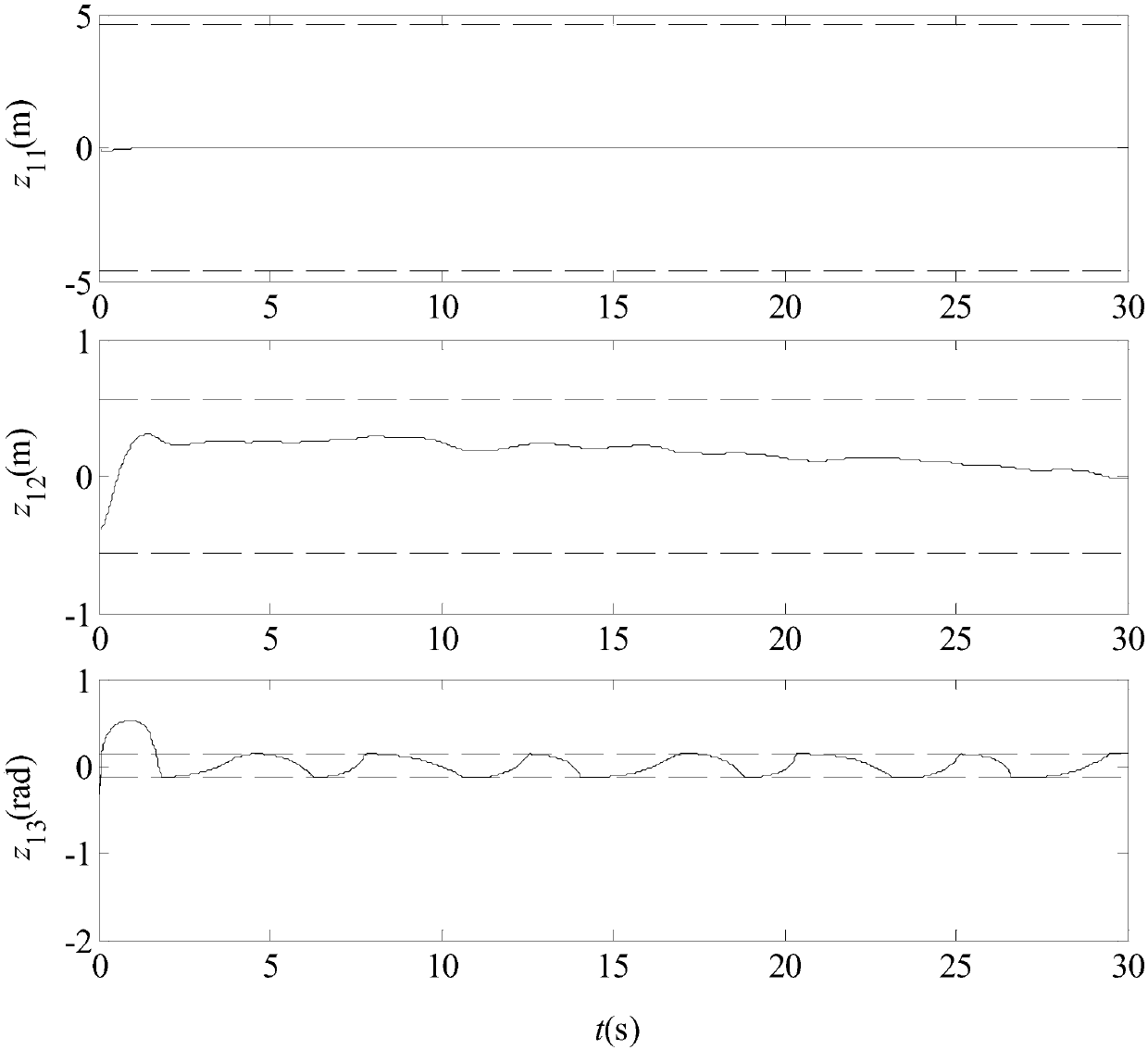Input saturation-considered unmanned surface vehicle full-state constraint trajectory tracking control method
A trajectory tracking and control method technology, applied in the direction of adaptive control, general control system, control/regulation system, etc., can solve problems such as state constraints and saturation problem processing, errors, etc.
- Summary
- Abstract
- Description
- Claims
- Application Information
AI Technical Summary
Problems solved by technology
Method used
Image
Examples
specific Embodiment approach 1
[0064] Considering input saturation, the full-state constraint trajectory tracking control method of unmanned surface vehicle includes the following steps;
[0065] Step 1. Establish the dynamic model of the surface unmanned vehicle:
[0066] The coordinate origin o of the satellite coordinate system o-xy is located at the center of gravity of the surface unmanned boat, the x-axis points from the stern to the bow along the middle longitudinal axis, and the y-axis points to the port side; the coordinate origin O of the ground coordinate system O-XY is located in the system At the junction of the mooring line and the mooring terminal, the X, Y axes and the x, y axes of the body coordinate system are in the same plane;
[0067] The dynamic model of the 3-DOF, multi-input and multi-output surface unmanned vehicle is as follows:
[0068]
[0069] in hollow Represents the field of real numbers; (η x , η y ) represents the position in the ground coordinate system, η ψ Indi...
specific Embodiment approach 2
[0088] The process of estimating the upper bound of the control input difference according to the adaptive method described in Step 3 of this embodiment is as follows:
[0089] There is a difference Δτ between the desired control input τ and the actual control input sat(τ), expressed as:
[0090] Δτ=sat(τ)-τ (4)
[0091] For the control input saturation forms (3) and (4), there is a non-negative real number θ that satisfies the following conditions:
[0092] ||Δτ||≤θ (5)
[0093] Take μ=θ 2 , μ is the true value estimated adaptively, and the adaptive estimation error is and exists is an adaptive estimate;
[0094] Thus, the square of the upper bound of the control input difference θ is estimated according to the adaptive method;
[0095] And design the adaptive law corresponding to the upper bound of the control input difference:
[0096]
[0097] Among them, δ, β 0 are all constants greater than zero.
[0098] Other steps and parameters are the same as those i...
specific Embodiment approach 3
[0099] The process of estimating the unknown upper bound of interference according to the adaptive method described in Step 3 of this embodiment is as follows:
[0100] The unknown disturbance H is bounded, namely , there is a constant such that ||H||≤h m ;
[0101] Take κ=h m 2 , κ is the true value estimated adaptively, and the adaptive estimation error is and exists is an adaptive estimate;
[0102] Therefore, according to the adaptive method, the unknown interference upper bound h m make an estimate;
[0103] And design the adaptive law corresponding to the upper bound of the unknown interference:
[0104]
[0105] Among them, ε, γ 0 are all constants greater than zero.
[0106] Other steps and parameters are the same as those in Embodiment 1 or 2.
PUM
 Login to View More
Login to View More Abstract
Description
Claims
Application Information
 Login to View More
Login to View More - R&D Engineer
- R&D Manager
- IP Professional
- Industry Leading Data Capabilities
- Powerful AI technology
- Patent DNA Extraction
Browse by: Latest US Patents, China's latest patents, Technical Efficacy Thesaurus, Application Domain, Technology Topic, Popular Technical Reports.
© 2024 PatSnap. All rights reserved.Legal|Privacy policy|Modern Slavery Act Transparency Statement|Sitemap|About US| Contact US: help@patsnap.com










